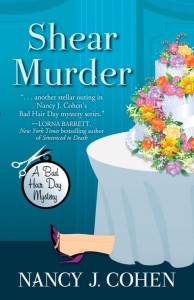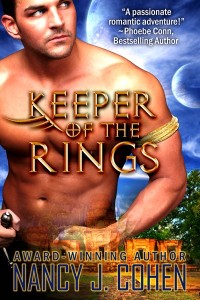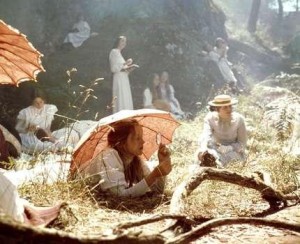Today is the official release date for Shear Murder, my  tenth Bad Hair Day mystery, so you’re going to have to put up with my shameless self-promotion. That’s the trouble when we authors must toot our own horns. We get as tired of talking about Me as you do hearing about it. Lately I’ve been clogging the loops and social networks with my blog tour announcements. I want to make it worthwhile for my hosts by getting a crowd on days when I guest post. But it means I am constantly tweeting and FB’ing and listing my tour dates and topics. I sent out one email newsletter to my fans already and will send another blast next month on my book’s official sale date.
tenth Bad Hair Day mystery, so you’re going to have to put up with my shameless self-promotion. That’s the trouble when we authors must toot our own horns. We get as tired of talking about Me as you do hearing about it. Lately I’ve been clogging the loops and social networks with my blog tour announcements. I want to make it worthwhile for my hosts by getting a crowd on days when I guest post. But it means I am constantly tweeting and FB’ing and listing my tour dates and topics. I sent out one email newsletter to my fans already and will send another blast next month on my book’s official sale date.
What? You thought I said today was the release date? Indeed, I did. However, for this publisher, that means the books are shipped from the warehouses today. They’ll be ready in the bookstores on February 8, the actual “on sale” date. Confusing, isn’t it? It was a lot less so with my prior publisher, who just had one pub date. As it is now, I’m not sure which day to urge fans to buy the book. Does it really matter anymore?
Here are a couple of sample interview questions from my online blog tour:
Tell us about your latest book.
Shear Murder is the tenth book in my Bad Hair Day mystery series. It’s the culmination of a personal journey for my hairstylist sleuth, Marla Shore. It’s about weddings and new beginnings. Just when Marla is planning her own nuptials, she gets caught up in another murder investigation. Marla is a bridesmaid at her friend Jill’s wedding when she discovers the matron of honor—the bride’s sister— dead under the cake table. She has a lot going on in her life, but when Jill pleads for her help in solving the case, Marla can’t refuse. It’s a fast-paced tale with humor, romance, and suspense as Marla races to find the killer before her wedding day arrives.
Considering the book is a mystery, how much can you tell us about the antagonist?
Since the story is a whodunit, I can’t tell you much! Many people had reason to want Torrie, the matron of honor, dead. Torrie was the bride’s sister, and Jill had a secret past that Torrie threatened to expose. How far would Jill go to maintain her sister’s silence? Then again, Torrie’s colleagues each had their own reasons to want her out of their way.
Meanwhile, Torrie’s husband inherits a piece of property that Torrie had jointly owned with her sister. How badly does he need the money from a property sale? And speaking of commercial property, Jill’s uncle and cousin were involved in a shady real estate deal with the owner of Orchid Isle, where Jill’s wedding took place. Did Torrie learn too much about his secrets? And so on. As you can see, there are a number of suspects. You’ll have to read the story to figure out which one of them is the culprit.
What motivated you to write this story?
My books all have happy endings, and so I wanted to give my series one, too. Seriously, my fans wanted to know when the next Marla Shore mystery would be coming out, but my former publisher had cancelled the series. As the markets changed, I decided to finish this book and give my readers the closure they deserved. So I really wrote it as a response to fans and in gratitude for their support. I hope they are pleased with Shear Murder. It was a delight to write, and I had fun bringing back all the secondary characters we’ve grown to know and love. I am grateful to Five Star for getting this book in front of readers. So if you’re looking for a humorous mystery centered around weddings with a whodunit puzzle to solve, check it out.
Watch the Book Trailer
BUY NOW!






